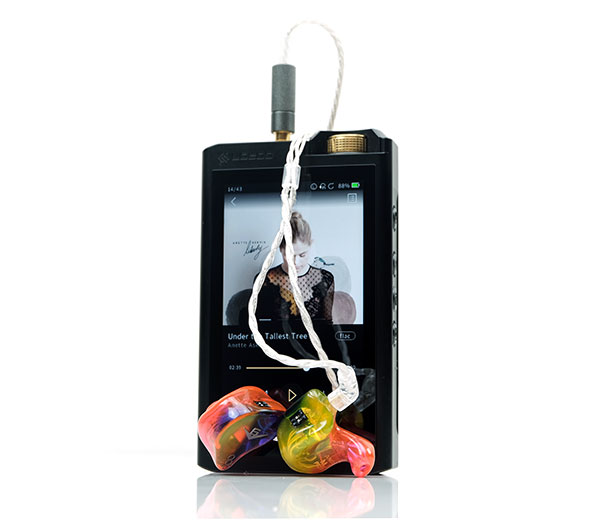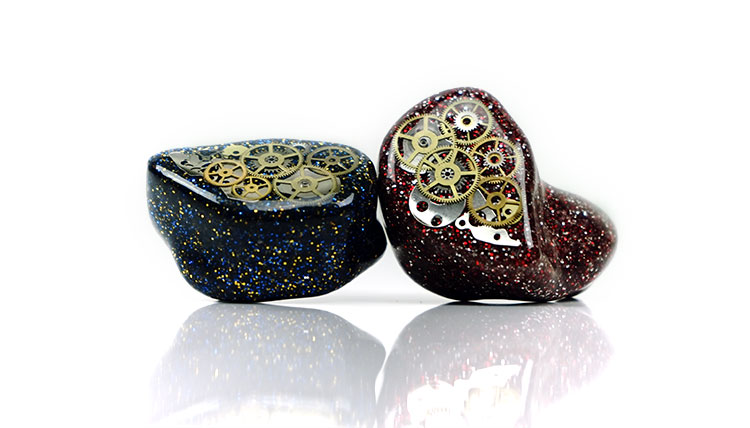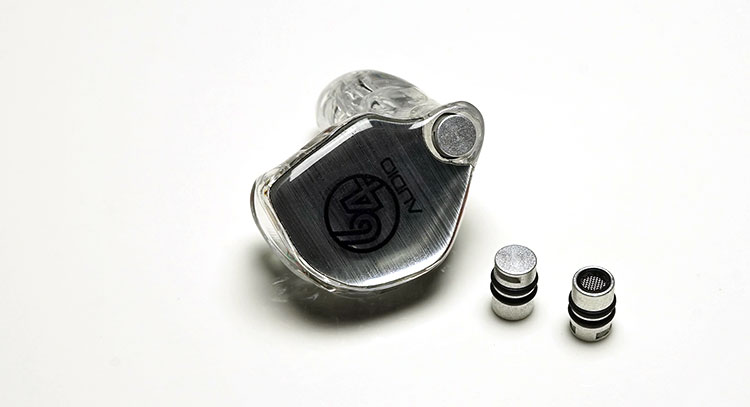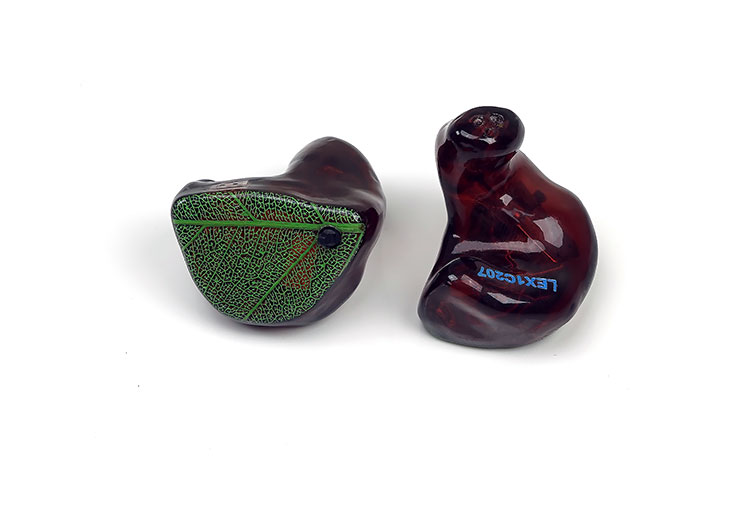Synergy
Efficiency
The qdc Anole V6-C spec on paper is a bit broad at 16-29Ω and 106-109dB SPL/mW. I am putting that down to the difference between the switch settings with the high sensitivity setting closer to 16Ω and that 109dB rating and the rest a little lower.
Certainly, when compared to the likes of the Lime Ears Model X which we felt had a similar rating the gap was not huge, maybe 1-2dB at most, and drove equally well off most sources.
The Anole V6-C is not quite as sensitive as the 64 Audio A6 which is rated at 22Ω and 115dB. Here we found ourselves lowering the volume by around 3-4dB or 5 steps on the Sony 1Z for volume matching.
It is less efficient or sensitive than the Empire Ears Phantom or the Campfire Audio Solaris with the Phantom a good 10-15 steps lower than the Anole V6-C in low gain unbalanced on the Sony 1Z.
Impedance Skew
For HiBy Music R6 and R6 Pro users, I could not detect any difference in general tonal balance between the two DAPs using the Anole V6-C, even in high sensitivity mode.
With an IEMatch cable, we achieved the same conclusion with the R6 alone. It would seem the Anole V6-C is unaffected by the 10Ω output impedance of the R6 or the difference is too subtle to be noticeable.
Noise
Noise performance was very good with the Anole V6-C. It is not as susceptible to low-level hum from a typical analog amp stage like the Solaris, Andromeda, or Phantom.
Anything with higher noise floors such as the Oppo HA-2 and the ALO Audio V5/Oriolus BA300S tube amps will still be detectable but more manageable.
For sources such as the FiiO X3iii and X5iii which can show off a bit of hiss, I found the background on their amp stages to be impressively quiet with the Anole V6-C. For DAPs such as the X7ii with Am3a, the DX200 with Amp 1, and the Lotoo PAW Gold Touch the noise floors were non-existent.
Pairings
During the testing, I actually didn’t find one type of source signature to greatly favor the Anole V6-C sound over another. There will always be an element of preference so if you feel the slightly warmish tinge to the timbre of the V6-C is not quite what you want then I suggest using a more neutral-sounding DAP in your setup.
Otherwise, shoot for excellent dynamic range and detail and avoid any overly dark-sounding amplification with the Anole V6-C to avoid sucking out the air from its excellent vocal presence.
Sony NW-WM1Z
My favorite pairing out of the DAPs tested. A very black background, excellent instrumental separation, and plenty of punch in the low end, even in the default setting.
Power was not an issue. You can run this in low again no problem. If I am nitpicking the treble can be a little digital but it’s relatively negligible on an otherwise very detailed and powerful pairing.
Lotoo PAW Gold Touch
The Touch fits the bill nicely for a more reference sound in combination with the default switch which tends to play down the sub-bass bias of the strong bass setting and the lower-mid enhanced warmth of the Smooth vocal setting.
If you need just a bit of low-end bang without loss of detail then the ‘Strong Bass’ setting won’t upset the tonal balance too much. The Touch differentiates a little from the DX200 and Sony with a slightly stronger lower treble presence on the Anole V6-C but the dynamic range on this pairing is stellar.
iBasso DX200
The iBasso DX200 with Amp 1 was a great pairing with the Anole V6-C using Amp 1. The dynamic range from this pairing was excellent with a really tight and responsive low-end and a very black background to boot. Nothing felt overly emphasized with the Anole V6-C delivering a very natural but detailed performance.
FiiO X7ii
If you prefer your highs with a bit more fizz and a bit more low-end body then the FiiO X7ii with AM3a is a nice combination with the Anole V6-C.
I tended to enjoy the ‘Smooth Vocal’ setting the most with the X7ii for its slightly more euphonic midrange timbre and nice vocal emphasis but some might prefer more bite with the default switch setting.
HiBy Music R3
You don’t have to necessarily go high-end either. The HiBy Music R3 pairing was excellent. Not quite resolving or as powerful as the AK240 but nevertheless more than enough power and a very balanced sound.
Select Comparisons
Empire Ears Phantom
From $1799
Technical
The Phantom is a 5-balanced armature driver custom universal monitor rated at 10Ω and 117dB sensitivity. Its configuration is 2 Low, 1 Mid, 1 High, and 1 Super High with a 5-way synX crossover.
The qdc Anole V6-C packs in an additional driver, 4 sound signatures, and starts almost $500 cheaper which makes it seem fairly good value in comparison.
Build
The build quality on both is superb though I have a slight bias toward the color combination of the Magic color design of the Anole V6-C. It is a pure preference thing as both are high-quality finishes. Empire Ears’ online design and purchasing process is much the superior of the two and inspires a bit more confidence.
Like the Anole V6-C, the Phantom also uses a horn design for signal delivery and generally a relaxed fitting with a slightly short nozzle. However, the fitting is slightly wider than the Anole V6-C with a bit more canal pressure. Thus, the seal and passive isolation are marginally better on the Phantom, particularly on low-frequency noise such as air-cons.
The reversed polarity protruding design of the V6-C cable connection system is a pain compared to the regular 2-pin recessed socket of the Phantom. EE also supplies a higher quality Effect Audio Ares II 4-wire OFC cable compared to the stock silvering 4C copper wire on the Anole V6-C.
Performance
The Anole V6-C is not as efficient or sensitive as the Phantom in all settings. The high sensitivity setting will close the gap but only by around 20-25%. To be honest, the Phantom is one of the most sensitive monitors I have so there is no surprise there. The Phantom will be the easier of the two to drive with even quality smartphones offering decent performances.
On the Sony 1Z, the Phantom sat around 50 on low gain, and the Anole V6-C around 70 on low gain with high sensitivity at 65. That is a fair-sized gap.
In deference to the Anole V6-C, it is much less susceptible to amplification of high noise floors or any DAP noise floor for that matter. That slight hiss on the Lotoo Paw Gold Touch, DX150, or Cayin N8 with the Phantom is negligible or vastly reduced with the V6-C. Horses for courses.
Tonality
Tonally, both monitors are relatively U-shaped and aim for that same musical, slightly warm, and euphonic tone. However, there are a few tuning differences between the two that affect the final presentation, namely how much of a lower mids dip and the extent of the vocal forwardness on the Anole V6-C.
Bass
The V6-C has a little more bass/mids separation compared to the Phantom’s more linear bass-to-mids performance. The Anole V6-C sounds the snappier of the two for low-end punch and definition but in default mode, it is much lighter in weight.
The low-end sound on the Phantom sounds a little warmer and more forward. They also seem to have a bit more body and richness sub-1k compared to the V6-C.
You can switch to the Strong bass signature to even it up a little between the two monitors but I tend to find the bias on the strong bass on the Anole V6-C to target the sub-bass presence a bit more than the mid-bass so it still lacks a little of that mid to upper bass warmth of the Phantom.
You can also inject a little more warmth in smooth vocal mode but it is still not as thick sounding as the Phantom.
Mids
The vocal presence is more forward on the Anole V6-C with the Phantom delivery a much more neutral and slightly veiled performance by comparison.
There is a more substantial 1-4k elevation on the Anole V6-C compared to the Phantom’s minor 2-3k bump. That distinction becomes ever more obvious when you switch to the V6-C smooth vocal mode which pushes vocals even further forward and adds a bit more warmth to the lower mids.
Treble
The Anole V6-C in default, smooth, and bass-heavy settings has a bit less lower-treble presence with a fairly substantial suck-out from 4-6k and both have similar levels of upper treble presence up to 8-9k before rolling off.
The high sensitivity setting does what it says on the tin by increasing the loudness levels and dropping volume by around 5-6 steps. Treble on the Anole V6-C high sensitivity setting may seem a bit more present as a result.
64 Audio A6
From $1199
Technical
The A6 is a 6-balanced armature driver custom monitor rated at 22 ohms and has a sensitivity of 115dB. It is priced quite close to the Anole V6-C and is somewhere in the middle of the pack in terms of the 64 Audio product line-up.
This particular unit comes with the 64 Audio’s excellent APEX technology for pneumatic sound pressure relief and minimizing hearing damage.
You get two APEX modules, M20 and M15 with the M15 the most open-sounding and the less porous M20 sounding a bit thicker and bassier. Hence you can acquire 2 sound signatures compared to the V6-C’s 4 switchable sound signatures in their 6 BA driver build.
Build
The 64 Audio design tool is probably one of the best in the business for online custom monitor purchasing. Certainly, I would point qdc to this and see if they can tighten up their design tool a bit more.
That being said, 64 Audio uses 3D printing but their choice of colors for the shells is just 5. You can throw in a ton of faceplates but if the shell colors do not compliment you have a much narrower range. Granted, the qdc options can be wildly expensive, more than the cost of the monitor, but they are truly unique with some beautiful combinations.
3D printing is more accurate, the nozzle is longer but very precise on the A6 and the fit is excellent. The qdc build on the V6-C is much more attractive looking than the A6 though the fitting is much more relaxed. The seal on both is the same.
Performance
Note the A6 was tested with stock cable and M15 APEX module.
In all but the high sensitivity mode, the A6 is the slightly more sensitive of the two. Testing unbalanced in the Sony 1Z the A6 was safely at 65 steps low gain whereas volume matching was around 5 steps higher on the V6-C. The high sensitivity switch will drop the V6-C volume levels to almost the same as the A6 though it will alter the sound signature.
Tonality
Like the Phantom, both are going for a U-shaped signature but the tuning emphasis is different in certain areas and this changes the timbre a little on each for me.
In summary, the A6 is a bit warmer, with more mid-bass and lower-mid bloom, slightly veiled in the mids and vocals by comparison, and with more upper treble roll-off. The A6 hits a little harder but sounds the darker of the two.
Bass
The A6 has a bit more bass bloom and mid-bass to lower mids warmth than the V6-C which sounds a touch cleaner. The A6 has a bit more elevation from 200Hz to 800Hz which can account for that compared to the bigger dip in the V6-C.
With the Strong bass setting the V6-C sub-bass presence can match the A6 in terms of extension whereas the smooth vocal setting can close the gap in terms of lower-mid warmth.
Mids
Mids, especially vocal presence is not quite as neutral on the A6 as the Phantom with a decent 1-4k rise. Vocals are richer and more forward on the A6 compared to the Phantom but lack the air and openness of the equivalent Anole V6-C’s 1-4k bump.
You get some nice smooth euphonic timbre on both but the A6 sounds just that bit more rounded and could do with a touch more upper-order harmonic balance for a bit more excitement and snap to its signature. It is just a bit too soft for my liking.
The Anole V6-C in both default and smooth vocal settings still has a better harmonic and natural balance to my ear for instruments and voicing.
Treble
In their stock settings, A6 with the M15 module and the Anole V6-C on default, the V6-C is the more open sounding of the two with more treble extension and sparkle around 8-10k.
The A6 rolls off a bit earlier and faster around 6k, maybe 7k tops. It robs it of a little air compared to the more energetic and taller-sounding Anole V6-C.
Lime Ears Model X
From €890
Technical
The Lime Ears Model X is a quad-balanced armature custom monitor design though the impedance and sensitivity stats are not given. Our best guess was 18-25Ω and approximately 104-109dB sensitivity based on comparisons to the likes of the Andromeda and the M-Fidelity SA-43.
Like the Anole V6-C, the Model X has a switchable tuning design. The switch is two-way as opposed to 4 way and more focused on enhancing the bass response than the overall sound signature.
Build
The online design tool for Lime Ears is pretty good with reasonable pricing for add-ons (30-40 EUR max) and a fairly simple check-out process. There are no extravagant jewelry or skull designs but then again these cost a fortune so the price increases are much gentler than qdc options.
Build quality and design on the Lime ears is very good but again I think qdc has more creative options in building something truly unique. The Model X does not use a horn nozzle design with the tri-bore design tubes exiting right at the tip.
As such the nozzle is slightly longer and it penetrates a little deeper. The pressure from the seal on the Model X is a bit more than the relaxed fitting on the Anole V6-C and the seal is just a little bit better as a result.
The switch system on the Anole V6-C is a bit more sophisticated, not just in terms of more choices (4 v 2) but also in the build quality. I have used switches like this before on the Vision Ears VE6 and did have to get them replaced after 4 years due to degradation and humidity factors.
Performance
Across our sources, the Lime Ears Model X tested as being marginally less sensitive than the qdc Anole V6 but the gap was very minor, perhaps 2-3 steps on our Sony 1Z unbalanced low gain as an example. Certainly less of an adjustment than the Phantom or the A6.
Other sources such as the Lotoo Paw Gold Touch and the new HiBy R6 Pro exhibited similar marginal adjustments.
Switch Off
Tonally, the Model X in its default setting has a reasonably musical, slightly u-shaped signature but it is not as rich or full-bodied sounding as the Anole V6-C. It has a lighter tone with a more restrained bass bump and a neutral instrumental/vocal.
The balance is very nice actually with a certain sweetness to its timbre, more than enough air, and slightly better lower-treble presence than the Anole V6-C.
Switch On
With the switch on, the bass response is much more elevated and forward-sounding. Certainly, you will get a lot more bass power, body, and slam with the bass switch on the Model X, much more so than even the ‘Strong Bass’ switch setting on the Anole V6-C.
However, with the ‘Strong Bass’ setting on the Anole V6-C, I felt the tonal balance remained a bit more accurate.
Our Verdict
Well, what a marvelously tuned monitor this is. The Anole V6-C is a triumph of good tuning over technical glorification. Six drivers might be middling and not by any stretch of the imagination are you getting the final word in micro-detail or vast staging control.
Instead, you just get a gloriously fun-sounding performance that makes the hair stand on the back of your neck with a level of PRaT I have not heard in ages.
The quirks? Our synergy score has dropped due to the reverse polarity protruding connectors on the V6-C and the confusing online web store. One can only hope these areas change because aftermarket cables take the V6-C to a ridiculously high level of fun.
Even with the stock cable, this monitor has the same meaningful impact on my listening experience as I had with the Final D8000. Memories of my first moments with the Audeze LCD-2 back in 2011 spring to mind when I endlessly slapped on rock track after rock track just to hear what it could do.
Yet to call the V6-C a rock specialist is far too simplistic. That vocal presence and naturally balanced sound replete with multiple signatures make it a tremendously versatile monitor. Throw in stellar build quality and it is rather hard to imagine why any ‘to air-guitar’ lovers would want anything else.
qdc Anole V6 Technical Specifications
- Sensitivity: 106-109dB SPL/mW
- Frequency response:10Hz-20000Hz
- Impedance:16-29Ω
- Armature units: 6 micro balanced armature Armature
- Noise isolation: 26dB
- Monitor plug: 3.5mm(1/8″)
- Connector Cable: optional
- Shell color: optional
- Technical feature:3 sound channels, 3 crossovers
- Frequency response types: 4 Types









